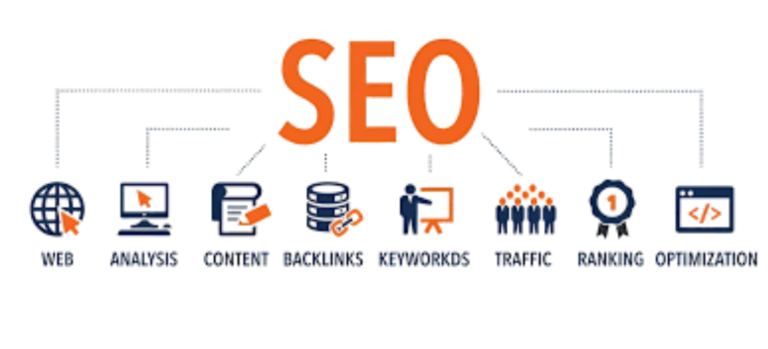Adapting to Market Trends: How to Stay Relevant in a Rapidly Changing Landscape
In the ever-changing landscape of contemporary commerce, remaining pertinent is not merely a matter of keeping up with trends—it entails spearheading progress amid perpetual transformation. To thrive in the swiftly shifting terrain of today’s market, enterprises must adopt proactive tactics that anticipate and adeptly handle market fluctuations.
This post will examine vital techniques that businesses can implement to uphold their competitive advantage amid rapid market changes.
Investing in Technology
Companies striving to succeed in today’s business landscape need to prioritize investing in technology to optimize their operations and bolster productivity. Take, for example, accounting software. This software automates financial processes, guaranteeing the timely generation of accurate reports. The optimization reduces the burden on financial teams and additionally delivers pivotal insights essential for imperative decision-making.
Incorporating modern technology surpasses mere conformity to trends; it places enterprises at the forefront of improving productivity and enhancing operational norms. By embracing these technologies, businesses can gain a tactical edge, propelling them to outshine competitors and assume leadership in their industries. This progressive mindset not only simplifies processes but also unlocks opportunities for expansion and supremacy in the market.
Embracing Customer-Centricity
In today’s business world, success is attributed to fulfilling customer desires. Companies that prioritize understanding and addressing customer needs have an increased opportunity for growth. Through collecting and analyzing feedback from customers, companies can adapt their offerings to align with evolving preferences.
Offering personalized products and customer support can undoubtedly distinguish a company, fostering customer retention and garnering recommendations. In fact, data indicates that 73% of consumers worldwide say their buying decisions are influenced by the quality of customer service. Therefore, prioritizing the needs of clients is not merely a fleeting trend; rather, it entails building profound bonds that yield dependable outcomes for the business.
Fostering Agility in Decision-Making
Promoting quick decision-making is crucial in today’s fast-evolving business environment, not just a trendy term. Businesses that enable teams to make decisions promptly with solid information can better handle market changes and take advantage of new opportunities. Implementing agile project management methods boosts how companies respond and adjust, keeping them competitive in a tough market.
Agility isn’t just about reacting quickly but also about shaping the business’s future proactively. It requires a forward-thinking approach to steer business strategies effectively amid constant flux. By fostering a culture of agility, organizations not only react swiftly but also actively shape their path towards sustained success.
Continuous Learning and Skill Development
Continuous improvement in skills and knowledge within your workforce is crucial for fostering innovation and growth. By prioritizing ongoing learning and skill enhancement, businesses not only support their employees but also secure the future success of their operations.
Implementing training initiatives and promoting certifications helps cultivate a dynamic environment where learning is valued. This approach boosts employee satisfaction and loyalty while also empowering teams with up-to-date resources and strategies to advance innovation and streamline operations.
Monitoring and Anticipating Market Trends
In today’s competitive market, achieving success goes beyond just reacting to shifts; it means foreseeing and seizing upcoming trends. Leveraging cutting-edge analytics, market research, and industry insights empowers businesses to maintain a leading edge.
Vigilantly tracking market trends helps companies spot new prospects and possible risks ahead of time. This proactive approach enables them to craft strategies that minimize threats and foster steady expansion. Analyzing market trends isn’t merely staying informed; it’s about crafting plans that set your business on a path to enduring prosperity.
Building Strategic Partnerships
Collaborative relationships pave the way for enhanced capabilities, entrance into new markets, and the spark of new ideas. When companies team up with others that share similar goals, whether through combined efforts, vendor relationships, or alliances, they can make use of shared strengths and assets.
This approach improves how efficiently operations run and creates avenues for further growth and broadening market reach. Forming these key collaborations is more than just broadening your contact list; it’s about forging connections that drive your business ahead in a fiercely competitive environment.
Final Thoughts
To keep up with the fast-paced changes in the business environment today, it’s essential to take an active role in adapting and innovating. Invest in new technologies, focus on the needs of customers, maintain flexibility, commit to ongoing learning, stay aware of market shifts, and forge key alliances. These actions can help your company not just persist but flourish in times of uncertainty.
These approaches are not isolated measures; rather, they are interconnected supports that enhance your company’s ability to endure and stay pertinent. As you proceed in your efforts to lead in your industry, remember that adapting is more than mere reaction—it involves actively crafting your company’s future with insight and purpose. Welcome changes, leverage new ideas, and lay the groundwork for lasting achievement in a constantly changing business landscape.







